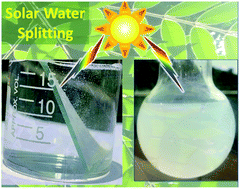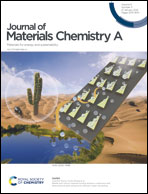A scalable and thin film approach for solar hydrogen generation: a review on enhanced photocatalytic water splitting
Abstract
Although nearly five decades of efforts have gone into solar water splitting (SWS), still success eludes and there is no big breakthrough till date. While huge importance is given either individually or concurrently to the three fundamental steps, namely, light absorption, charge carrier separation and diffusion and charge utilization at redox sites, many aspects that are practically helpful to improve the efficiency are not widely discussed and practised. Nonetheless, by adopting a number of small, but significant changes, solar hydrogen production can be enhanced. The present review discusses such different approaches employed for photocatalytic water splitting reported in the literature. For example, an increase of up to two orders of magnitude in solar hydrogen generation was observed with a film form compared to the particulate form of the same catalyst. Discussion on various approaches of enhanced hydrogen production under sunlight and one sun conditions is the main focus of this review, in particular with thin-film forms. The merits and demerits of thin film and particulate methods, respectively, are addressed in detail. Potential methods and successful stories on scalability are also discussed in the present review. In contrast to charge collection over a long distance in solar cell-based methods, a film-based method discussed shows that the local charge utilisation at a zero applied potential is an attractive feature for SWS. A comparison is provided between the PEC-WS and SWS for solar hydrogen generation, and how far we are from the reality to produce solar hydrogen on an industrial scale. We believe the presently practised diverse evaluation efforts may be truncated to fewer methods such as film-based evaluation and in a focussed manner to tackle the SWS issue towards sustainable production of solar hydrogen.

- This article is part of the themed collection: Journal of Materials Chemistry A Recent Review Articles


 Please wait while we load your content...
Please wait while we load your content...